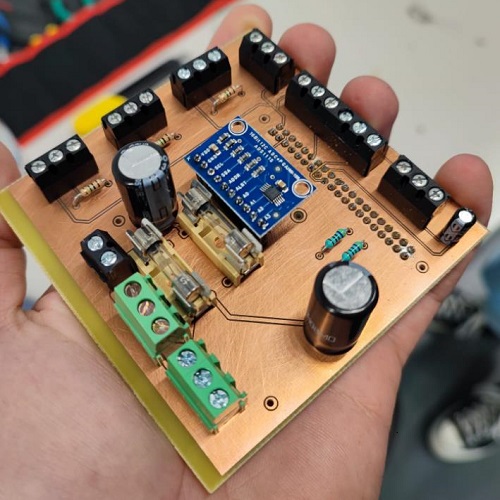The goal of this project is to bring people closer together on an emotional level, when distance and time become major obstacles in maintaining close connections. As experienced during the 21st century, the world and societies have become more and more remote; the “online” ideology is restricting emotional and sentimental presence, closeness and intimacy. Our aim is to bring families, friends, and lovers closer to each to each other, through the use of “Feel” devices.
Project description
We developed a 3D-printed “Feel” device prototype with a LED matrix wrapped around its circumference. The prototype also has capacitive touch buttons on top, for turning on/off the device, enabling/disabling a heart rate sensor, and to enable/disable the boost function of the LED matrix.
The prototype includes an ambient light sensor which controls the brightness of the LED matrix, and a microphone to pick-up the sounds in the room. The sounds picked-up by the microphone are fed into a machine learning algorithm to detect four moods (angry, neutral, happy, sad) with acceptable accuracy.
All components are connected to the main brain of the device, which is a Raspberry Pi 4B, via a custom-made PCB. The prototype is powered by an external power supply which is connected to the back of the device directly via a DC socket.
The “Feel” device is controlled via a local website, which was built using the Flask framework as an extension to the Python programming language. The website communicates with the prototype using an API and stores the data. This will allow the user to look back at values, presented in charts, that occurred in the past.

Project results
The prototype “Feel” device that we developed during Minor BeCreative was able to detect the emotion in a room form sound to speech in real-time and distinguish between 4 different emotions with an accuracy of over 80%.
The device was able to detect mood of a room from sound and speech over a period of several minutes.
The look and feel of the device has been redesigned to enable the use of a larger LED matrix and more user friendly positioning of buttons.
Based on our test results and user-feedback during the final symposium, we were able to provide useful recommendations to our client for the further development of future “Feel” devices.
Video
Acknowledgement
The student project team would like to thank the company I-IKIGAI for their extensive support during the project.
